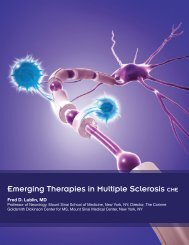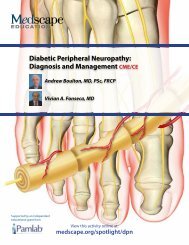The Pathophysiology of Irritable Bowel SyndromeCME - Medscape
The Pathophysiology of Irritable Bowel SyndromeCME - Medscape
The Pathophysiology of Irritable Bowel SyndromeCME - Medscape
You also want an ePaper? Increase the reach of your titles
YUMPU automatically turns print PDFs into web optimized ePapers that Google loves.
<strong>The</strong> <strong>Pathophysiology</strong> <strong>of</strong> <strong>Irritable</strong> <strong>Bowel</strong> Syndrome CMESlide 11.Just as there is a mucosal barrier in the small intestine, there is also a low permeability in the normal state in the colon. [4] <strong>The</strong>barrier in the colon may be broken, however, when malabsorption <strong>of</strong> either carbohydrates or fat results in the production <strong>of</strong>SCFAs, when there is bile acid malabsorption or immune activation, in the presence <strong>of</strong> genetic predisposition to inflammation orimmune activation or bile acid synthesis. Typically, this is going to be associated with IBS-D, increased fluid secretion andactivation <strong>of</strong> sensory mechanisms.Research has documented an increased intestinal permeability in IBS [9] ; this is relevant because 1 <strong>of</strong> the agents used in thetreatment <strong>of</strong> IBS, lubiprostone, has been shown in a porcine ischemia model to restore tight junction function and normalizepermeability <strong>of</strong> the intestine. [10] This may be advantageous if permeability is indeed a significant mechanism causing the patient’sdiarrhea.<strong>The</strong> cumulative excretion <strong>of</strong> a sugar molecule such as mannitol has been shown to be a fairly good noninvasive marker <strong>of</strong>permeability, as has been demonstrated in patients who have IBS-D. [9] Although the increase in permeability is lower than thatwhich is observed in patients with inactive or microscopic or ulcerative colitis, changes in permeability and tight junctionproteins appear to be quite relevant in IBS. <strong>The</strong>re is a relationship among duration <strong>of</strong> disease, body mass index, and, importantly,the expression <strong>of</strong> the tight junction protein occludin and pain in IBS.Pg.12


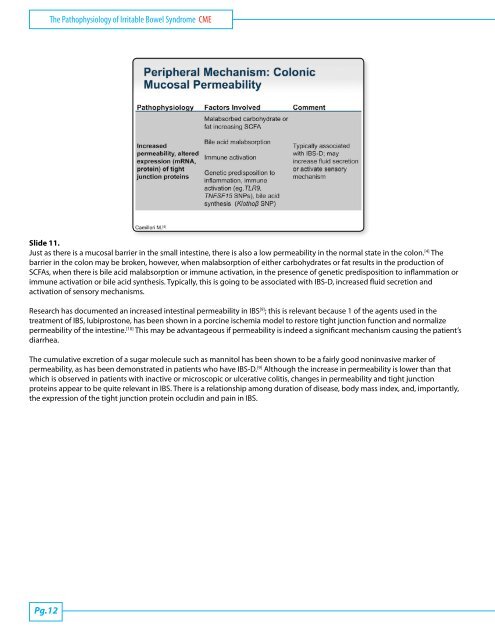
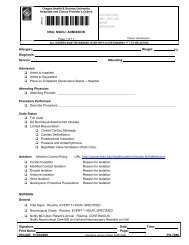



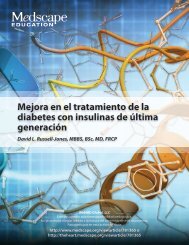
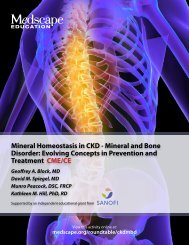
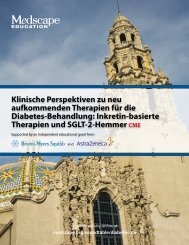
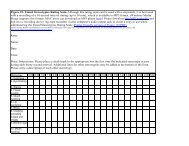

![NIH STROKE SCALE Interval: 1[ ] Baseline 2[ ] 2 hours ... - Medscape](https://img.yumpu.com/43645244/1/190x245/nih-stroke-scale-interval-1-baseline-2-2-hours-medscape.jpg?quality=85)
